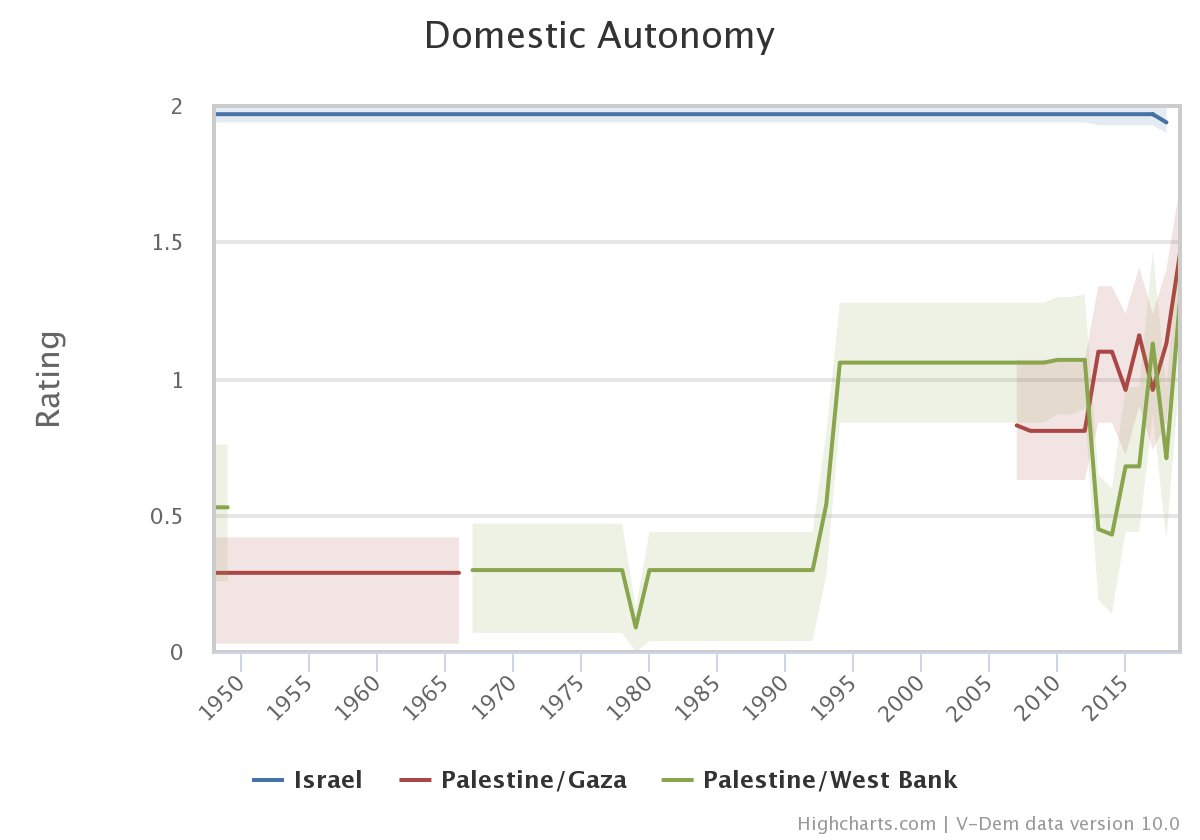“Land Day” in Palestine – Far from Autonomy
By: Lukas Bernhard
Mar 30, 2020
Every year on March 30, Palestinians and Arab citizens of Israel commemorate “Land day”, to remember the land expropriations of Arab Israelis in Galilee (Israel) in 1976. Israel’s settlement policy is seen as a bone of contention in the Middle East conflict. Against criticism for its expansionist policies and amid demands for autonomy in Palestine, e.g. from the United Nations, Israel continues to expand its settlements in occupied territories.
Today, we use V-Dem data to analyze the development of domestic autonomy in Gaza and the West Bank, compared to Israel. We use the indicator for domestic autonomy, which assesses the sovereignty of a state “from the control of other states with respect to the conduct of domestic policy”. The variable ranges from 0 (non-autonomous) to 1 (semi-autonomous) to 2 (autonomous).
The graph shows us multiple stages in the development of autonomy in Gaza and the West Bank. Both regions came under Arab occupation in 1948, after the independent state of Israel was proclaimed. Gaza was under Egyptian control, the West Bank occupied by Jordan, until both were captured by Israel during the Six-Day War in 1967. After this, Gaza and the West Bank were put under military occupation (1967 – 1981), respectively, and civil administration (1981 – 1994) by Israel. During this long period, both regions can be considered non-autonomous.
Things changed for the better in the 1990s. During the peace negotiations between Israel and Palestine, the West Bank acquired at least semi-autonomy. This took longer in Gaza, as Israel only agreed to withdraw in 2005. Since then, both territories have seen continuing conflicts with Israel, but also intra-Palestinian conflicts between Hamas (Gaza) and the Fatah (West Bank). Gaza and the West Bank seem far from being fully autonomous and even further away from normalization.
To learn more about V-Dem indicators and our online analysis tools, visit www.v-dem.net.


